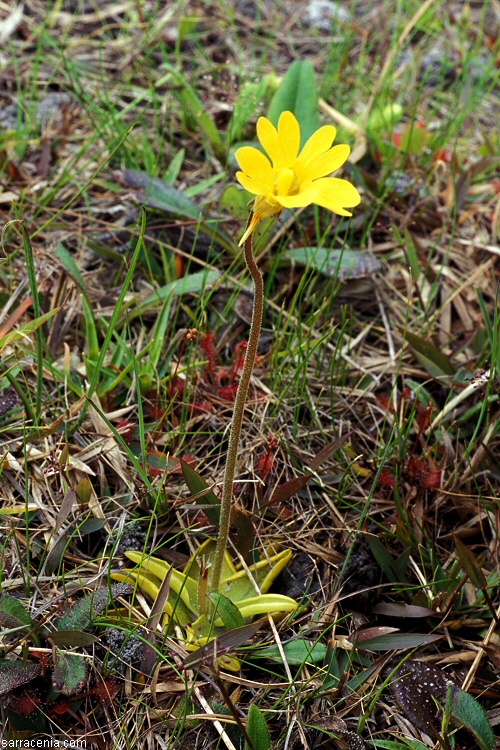
Yellow butterwort:
We found Pinguicula lutea there too, higher up the
shoulder where the soil was drier, a few meters from the traffic.
(Here is another plant.)
I am sure you have noticed the Drosera in this image. But observe also that the vegetation
is cropped short. This is because these plants are growing in the "mow strip" along the edge of the road. With the
suppression of burning in the fallow wooded lots, carnivorous plants are overwhelmed by other plants and fade away. Mow
strips, oddly enough, provide refuge for them. So while it is a harsh place to live (you'll notice this plant's first
inflorescence was apparently mowed off), it is often the last hope for carnivores.
But such hope is short-lived. For eventually, someone, somewhere, decides that instead of a mower, a broad spectrum herbicide
would be more cost effective. Once that happens, the carnivores haven't got a chance.